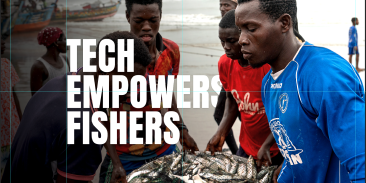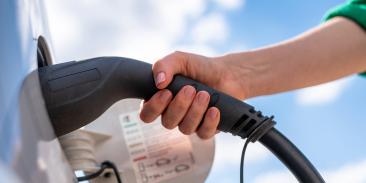New voices bring new hope for imperiled water supply
Climate change and population growth in areas dependent on water from the basin are projected to cause unprecedented water shortages over the coming decades. These shortages could have a major impact on communities from Denver to Phoenix, Salt Lake City to Los Angeles, and pretty much everywhere in-between.
There’s already a legacy of environmental damage in the basin: over the past century, laws and the development of infrastructure turned the once powerful Colorado River into a water supply system. From headwaters to the delta, river health has declined to the point where the last 100 miles of the river are now largely dry. Our challenge going forward is to figure out how to revitalize the Colorado and other damaged rivers in the basin, while meeting the needs of a growing population.
As the publication last year of the Colorado River Basin Water Supply and Demand Study showed, rivers in the basin may be unable to provide enough water to the communities that rely on them – whether for drinking or as the basis of a $26 billion river-based recreation economy. Recently I took part in a meeting of water managers from the Colorado River Basin to talk about the immense challenges faced by this huge region, which embraces seven states (AZ, CA, CO, NM, NV, UT and WY) as well as northwestern Mexico. At the meeting, speaker after speaker spoke of the study as “a call to action.”
Against that backdrop, the big announcement of the meeting was the roll-out of a multi-stakeholder effort to find solutions. This was a noteworthy and welcome departure from the way water management in the basin has traditionally been handled. It usually went on behind closed-doors, in negotiations limited to representatives of water rights holders who supply the region’s farms, ranches and cities. The predictable result has been management that ignores the needs of those without a seat at the table.
A Chorus of New Voices
At this meeting, in contrast, there were a host of new voices. Conservation groups were given an opportunity to describe how water management decisions in the basin affect river health. Native American tribes spoke about the importance of rivers to the peoples on the basin’s many reservations, where the unfulfilled promise of tribal reserved water rights looms large.
Of the five people who held the podium during the May 28 event, three were women, representing the Department of Interior, Arizona and conservation organizations, and one was a Native American man. This is a sea change from the days, as recently as the late 1990’s, when the term “water buffalo” was used to describe river managers, because the animal’s dominant characteristics (large, slow, and likes to hang around water) aptly described the senior men, often engineers, who made the big decisions.
Back then there was camaraderie among the women at Colorado River meetings based on the fact that there were so few of us. The only advantage to our minority status was that we never had to wait in line at the restroom. Similarly, few Native Americans could be found at those meetings. But the field has definitely changed, as government agencies have hired from a broader array of professional backgrounds and a more diverse population has gotten professional training to work on water management.
In Search of Lasting Solutions
Going forward, conservation groups and tribes will join federal, state and local water managers in a collaborative effort to address the Colorado River Basin’s looming problems. The next steps include:
- multi-stakeholder workgroups to address urban water conservation and re-use,
- agricultural water conservation and transfers,
- healthy river flows and
- a tribal-federal partnership to explore tribal water rights.
The Colorado River Basin Study sent a clear message that everyone’s interests – the water rights haves and have nots, as well as the river lovers – are at risk. Status quo management will lead to water shortage crises in our cities, farms, and ranches and leave us with dead and dying rivers.
The study also made clear that solutions are within our reach. But to achieve them we need new ways of managing the Colorado and all the other rivers of the basin. We need institutional flexibility in addition to traditional engineering, as well as a broad set of management objectives that serves the needs of all those with a stake in the process.
As the federal and state governments open the door to the new voices, and as we see new faces at the agencies themselves, I believe we will reach our goals.












I just did a major study on this very subject, which included the Rio Grande basin too, and my findings are not nearly as optimistic as yours seem.
The fact is that most of the major urban areas dependent on the Colorado and Rio Grande are over-pumping their aquifers by a 2-1 margin, and almost all of these cities are facing imminent depletion of there sub-surface water supplies.
My study also encompassed northern and central Mexico too, where their water supply sustainability issues could easily lead to a flood of 20-40 million water scarcity refugees pouring out of Mexico overwhelming all of the southwestern US, which has no spare water supply.
Did you know that the residents of Mexico City (22 million people) have had to endure complete random water supply blackouts of 3-5 days duration per month every spring for the last 6 years now, or that Mexico City is also draining its aquifers at 2-1 over the recharge rate too?
Did you know that at the current rate of extraction that Mexico's oil reserves will be gone in less than 12 years? How are you going to build massive water sustainability infrastructure without capital?
What about metropolitan Monterrey, almost as big as Chicago or LA, where residents will be limited to between 40 and 50 gallons of water per day by 2020, which isn't enough to take a shower, wash dishes, and flush the toilet twice?
What about Chihuahua, Juarez, or a dozen other major Mexican urban areas, also on the verge of running dry? What urban area in the southwestern US has enough water supply sustainability to continue to grow at 1.5% per year for another 20-30 years, and then host several million water scarcity refugees too?
The correct answer is None.
Over the last 3 years the Colorado is only running at slightly more than 8 million acre-feet average, versus a historical average of double that. Today there is a 50/50 chance that Lake Mead will be dry and limited to annual runoff recharge by 2020, and the same estimate exists for Lake Powell before mid-century too.
Today various water wars have already started, with the Indio/Palm Springs water district owing other Colorado users a half-million acre feet that they can't possibly pay back, Texas suing New Mexico, Mexico suing the US over their share of the Colorado, and Texas suing Mexico over another half-million acre-feet there, and the El Paso water district currently rationing their area to just 40% of annual average supply while they have cut northern Mexico by 75% or more too.
Did you know that only 10-15% of farmland in south Texas and northern Mexico even had enough water to plant crops this spring, which translates to a third-straight year of starvation in northern Mexico? Did you know that more than a dozen small cities and towns in Texas completely ran out of water this spring, or that the Rio Grande basin only got 26% of average annual snowfall too?
So, you are hoping to treat wastewater and then inject it into the aguifers, thereby polluting what water remains there, (an ever-dwindling supply), and then re-sell treated wastewater back to consumers as fresh water? What happens when lots of people start getting sick late in the dry season?
Did you know that 13 different Native American tribes have sued to re-assert control over their historic Colorado River water rights?
What about that 350-mile pie-in-the-sky pipeline that Las Vegas yet hopes to build to steal groundwater from northern Nevada farmers, which will only supply either The Strip or 150,000 houses there, only if Las Vegas actually ever gets that water, as it is still tied-up in court.
There is one way to save lots of water, which is developing urban hydroponic agriculture where fertilized water is recycled through the growing medium. Another way that will help less is going to renewable energy, which may have to include hydropower dams of some sort. After those two we are down to only 15% of total water use, 85% of that used as household water.
I sure hope that you have very good reason to be optimistic. I have more than 30 years worth of large-scale heavy logistics experience to go with my Metro State degree, and I am not nearly as optimistic, because of the refugee issue, which some seem to be ignoring. Even if metro-Denver becomes fully sustainable, what about Mexico City or Monterrey? Where are you going to put just half of their gross population?
Because 15 million people just between those two cities stand a 90% chance of being out of water several months every year within just 10-15 years if this now 12-year drought continues, as do the residents of El Paso, Juarez, Las Vegas, Indio, Palm Springs, Phoenix, Tuscon, and Yuma, while the residents of Albuquerque, Bakersfield, Fresno, Los Angeles, and San Diego won't be doing a lot better either.
Where are you going to put 30-50 million water-scarcity refugees in another 25-40 years, let alone what are you going to do when our planet runs out of phosphate another 30-40 years after that, which will cut crop yields in half too? Remember that animal manure requires animal feed and more water too! Don't even get me started on how we are going to move, refrigerate, and store 2 billion lbs of fresh food every week in just 30-40 years either!
We do have enough time and enough remaining necessary raw materials to build several more major water supply and/or hydropower dams locally, not for more growth today, but for the flood of bone-dry starving refugees that are almost certainly coming in the not too-distant future.
I have at least 50 sources to support the conclusions of my study including the Colorado Basin Supply study too.
Mark Richardson
July 16, 2013 at 11:38 pm